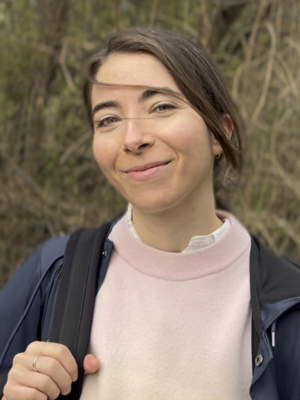Chop Day
It was a sluggish day at the salon. Raining outside; a Saturday. The boss lady was on edge all morning, going on about the taxi strikes and the Arab grocer up the street. “Mariana!” she snapped at me twice while tugging a boar-bristle brush through a woman’s gray bob. She doesn’t like when I stare out the storefront window, gnawing at my cuticles. “Not in front of the customers!” she stage-whispered.
The appointment at two o’clock was under an English name, not a regular client. When a mother and two girls walked in, I thought for a moment they might be celebrities, not like any had come in before. The woman—mid-40s, 2 or 3 shades lighter than her natural color—reminded me of Lady Di. The older girl was a teenager, maybe 14. Beautiful but grim. She had straight silky hair down to her waist in a shade of white-blond usually only found on children.
“My daughter wants to cut it very short. To her shoulders. Isn’t that a shame?” the mother said to the boss as she folded up a wood-handled umbrella in a blue tartan pattern. The daughter in question walked straight to the salon chair and sat down in front of the mirror. She spoke to her mother through her own reflection: “I told you I would do this alone.” Her eyebrows, light as her hair, lay thin and precise across her brow. “Fine,” the mother said, sweeping her gaze across the room. I watched her soft brown boots clack right back out the door and onto the gray pavement. For a moment we were all still.
Then the boss lady, ever the professional, got to work. “Mariana?” As usual I directed the girl over to the washbasin. My fingers raked through her wet hair and she relaxed her eyelids (I thought I heard her hum a refrain from a hit on the radio). The freckled skin on her forehead was thin, and through it I could see rivulets of blue veins. Looking up, I noticed the smaller child had sat herself down at the window seat, my usual spot, watching her sister from afar. Like many French children that age, her chestnut hair hit her mid-neck, a blunt, serious look for a girl. Little page.
“Here we go!” the boss lady said to the teenager in the mirror as she held a pair of shining scissors above her head. I knew what Hélène was feeling in that moment: strung with anticipation. For her that first chop, as the hair’s weight suddenly falls to the ground, is ecstasy. What always shocks me is how quickly it’s over. In half a second, years of growth—gone. All that brushing, tending, washing, braiding, breaking. I wanted to see it in the girl’s face, the flicker of regret that passes over them when they realize it can’t be undone. The only change I detected was a small upturn at the corner of her lips. My attention caught on the younger child: sitting up straight in the window seat, her gaze fixed at her sister’s neck, now bare for all to see. Tears dripped off her soft pointy chin. I reached for the broom, and began gathering the fresh cut hair into a pile. Then I turned back to the child and said: “We can save it for you if you like?” and she turned her big eyes to me and nodded.
When the mother walked through the door, her girls were prattling in two salon chairs they had swiveled to face one another. In her lap, the youngest held a Ziploc of her sister’s fallen hair. The mother stood in front of them, nodded once: “All done?” They hopped off their chairs and followed her back out onto the sidewalk.
I returned to my window seat and watched, leaning my cheek against the glass storefront, until the three were whittled down into figurines against the city gray. The mother was obscured by her blue tartan umbrella, but I held onto the girls, the one taller and straighter in a jean jacket, the other bouncing a bit in her red raincoat. From the backs of their heads bobbing in the distance, the two looked more like sisters now.
Hannah Felt Garner is a prose writer living between Paris and Brooklyn. Her short stories and criticism can be found in Cleaver, Paris Lit Up, and Revue Profane. Besides teaching literary analysis and composition, she also edits for Mother Tongue and Cleaver magazines. You can follow her writing on Instagram @hannahfeltgarner.





